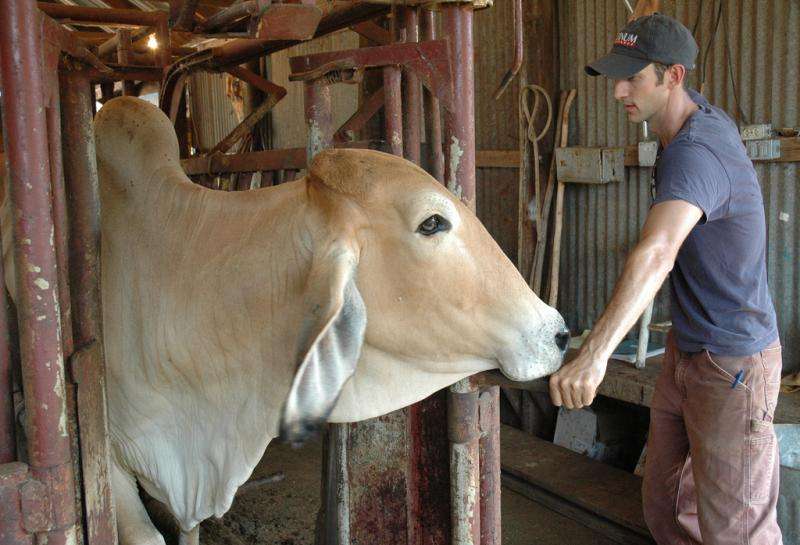Protecting vaccines from heat, cold and sunlight helps protect livestock

Ranchers should be aware that heat, cold and sunlight can affect the efficacy of vaccines during storage or handling, said a Texas A&M AgriLife Extension expert.
Dr. Jason Banta, AgriLife Extension beef specialist, Overton, recommends producers visit with a local large-animal veterinarian to develop a preventative herd health plan customized to their operation.
Vaccinations are a key component to preventative care in any producer's herd health plan, he said. Proper handling of vaccination drugs is critical to maintaining the product's efficacy.
Banta said it is important to keep vaccines at the storage conditions recommended on the product label, which is typically between 35-45 degrees Fahrenheit at all times, including while in transit and inoculating animals.
It is also important to keep vaccines out of the sunlight because ultraviolet rays can also affect the efficacy of vaccines, Banta said.
Producers should take a cooler with cold packs to the veterinarian or feed and farm supply store when purchasing vaccines, he said.
"You should have something to keep them within that temperature range and out of the sun even for the drive home," he said.
Producers should check the container for coolness upon arrival when ordering vaccines from pharmaceutical companies online, Banta said. Sometimes packages are delayed or not packed properly for the conditions during shipping.
If the container is not cool, contact the supplier and return the vaccine, he said.
Banta said producers, especially in the Panhandle, should be aware of cold weather when handling vaccines and should take appropriate steps to prevent the vaccines from freezing.
"Freezing temperatures can be just as bad as warmer temperatures," Banta said. "The key is keeping the vaccines within the recommended temperature threshold."
Producers should take the same precautions when storing vaccines, he said.
Banta recommends storage inside the household refrigerator on a shelf that maintains temperatures within the prescribed range.
"A lot of people store their vaccines in a refrigerator in the garage, or shop or barn but most of the time those refrigerators are the old one that was replaced," he said. "But even a new refrigerator can have trouble maintaining proper temperatures in some situations."
The University of Arkansas conducted a study of refrigerators located at veterinary clinics, ranches and retail stores, Banta said. Temperature data loggers found that a large percentage of refrigerators did not maintain the recommended temperatures over a 48-hour period.
Banta said producers can place a small, inexpensive weather station that records minimum and maximum temperatures inside the household refrigerator to check its range of temperatures.
Producers should use the same precautions when inoculating animals in the field, Banta said.
"Make sure you have an ice chest to keep the vaccine cool and out of the sun," he said. "Syringes need to be kept cool between uses as well. I recommend having a cooler in which to keep vaccine bottles and one for the syringes."
Banta recommends a do-it-yourself design for keeping syringes cool between shots. Holes large enough for the tube portion of the syringe but small enough to keep it from falling in can be cut into the lid of a small bucket or cooler. The container can then be filled with cold packs.
"Remember to protect your vaccines at all stages to maximize their effectiveness," Banta said. "Damaged products won't work like they are supposed to on animals, so handle them with care."
Provided by Texas A&M University



















